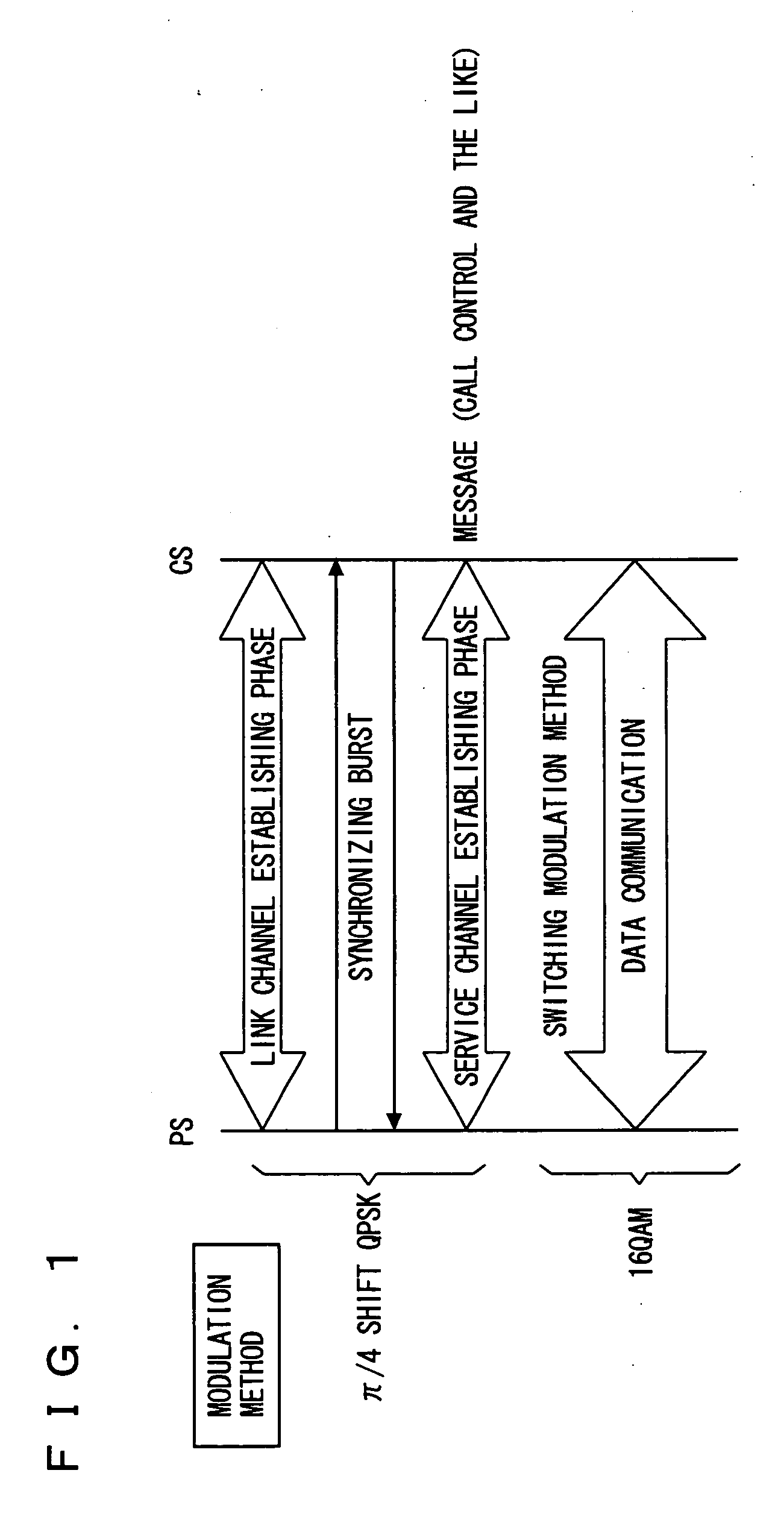Radio device, channel allocation method, and channel, allocation program
a radio device and channel technology, applied in the field of wireless apparatus, can solve the problems of affecting the quality of communication, so as to avoid the degradation of communication quality
- Summary
- Abstract
- Description
- Claims
- Application Information
AI Technical Summary
Benefits of technology
Problems solved by technology
Method used
Image
Examples
first embodiment
[0092] First, in the first embodiment shown in FIG. 4, determination as to channel allocation is performed based on the D wave level (or S / N ratio).
[0093] Referring to FIG. 4, in step S1, the base station receives a wireless connection request from the terminal, throughπ / 4 shift QPSK communication.
[0094] The base station constantly measures the received signal power, and based on the result of measurement, in step S2, measures the RSSI value, that is, the D wave level, from the carrier sense level.
[0095] Then, in step S3, the measurement is compared with a threshold value of the D wave level that allows communication by 16QAM, which is calculated beforehand and stored in a memory, not shown, of the base station.
[0096] As shown in Threshold Value Table A for channel allocation in FIG. 4, in order to attain BER necessary for 16QAM communication, the D wave level must be about 22 dBuV. Therefore, such a D wave level is stored as the threshold value, in the memory (Threshold Value Ta...
second embodiment
[0110] In the second embodiment shown in FIG. 5, channel allocation is determined based on the D / U ratio.
[0111] Referring to FIG. 5, steps S21 to S35 are the same as steps S1 to S15 of FIG. 4, and therefore, description thereof will not be repeated. The method of determining allocation in accordance with the second embodiment shown in FIG. 5 differs from the method of determining allocation in accordance with the first embodiment shown in FIG. 4 in that in addition to the method of the first embodiment shown in FIG. 4, channel allocation is determined based on the D / U ratio in steps S36 and S37.
[0112] Specifically, after it is determined in step S30 that there is an empty channel, the D / U ratio is calculated from the D wave level measured in step S23 and the U wave level measured in step S29.
[0113] Thereafter, in step S36, the calculated ratio is compared with the threshold value of D / U ratio that allows communication by 16QAM, which is calculated beforehand and stored in a memory...
third embodiment
[0127] As described above, threshold determination of D / U ratio based on the D wave level when the synchronizing burst is received is performed in addition to threshold determination of D wave level at the time of connection, and therefore, channel allocation determination with higher accuracy becomes possible.
[0128] In the embodiments described above, when channel allocation is rejected, only a notice thereof is sent to the terminal. The terminal and the base station may be controlled such that when channel allocation for 16QAM is rejected, communication is established by another modulation method having smaller multi-value number than 16QAM.
[0129] The terminal that has received the notification of channel allocation rejection from the base station notifies the user about the rejection by a display on a display unit (for example, display unit 17 shown in FIG. 3).
[0130]FIG. 7 is an illustration showing, with time, details of a communication procedure between a terminal PS and a b...
PUM
 Login to View More
Login to View More Abstract
Description
Claims
Application Information
 Login to View More
Login to View More - R&D
- Intellectual Property
- Life Sciences
- Materials
- Tech Scout
- Unparalleled Data Quality
- Higher Quality Content
- 60% Fewer Hallucinations
Browse by: Latest US Patents, China's latest patents, Technical Efficacy Thesaurus, Application Domain, Technology Topic, Popular Technical Reports.
© 2025 PatSnap. All rights reserved.Legal|Privacy policy|Modern Slavery Act Transparency Statement|Sitemap|About US| Contact US: help@patsnap.com



